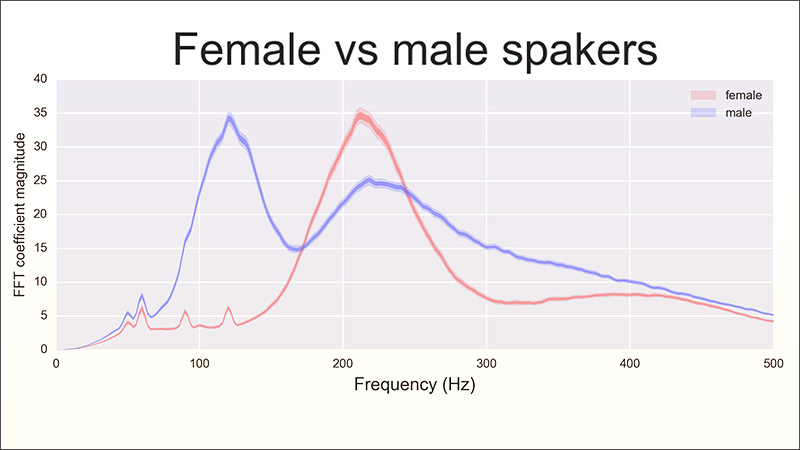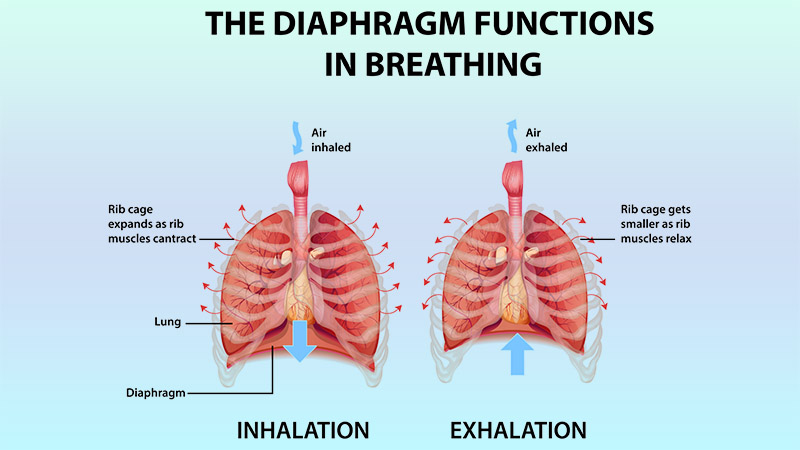FTM Voice Training on How to Make Your Voice Deeper

As an FTM individual, the desire to shift from the feminine-sounding voice assigned to you at birth to a more masculine, deep voice that aligns with your identity is only natural.
Worry not; you can deepen your voice via hormone replacement therapy (HRT), voice training, or both. HRT will add testosterone for that deep voice, while voice training uses techniques and methods to deepen your voice.
The benefits of a masculinised voice are part of the gender-affirming process that will bring positive change in your well-being and how you interact with others. Voice training can help you build confidence, authenticity, public speaking, and presentation skills.
Understanding FTM Voice Training
1. What is Voice Training
Voice training entails training your vocal cords to produce your desired voice. The primary role entails breathing control to modify a singing voice’s quality, range, and stamina.

In the case of a FTM voice training will deepen your voice to align with your identity.
a) Explanation of voice training and its role in gender transition
Voice training is essential in gender transition as it helps you fully masculinise. It is an integral part of gender-affirming care.
The main aim is to mitigate your vocal dysphoria by helping you align your voice to your masculine identity and Frame.
b) Importance of working on pitch, resonance and speech patterns
FTM voice training will help you improve your authenticity, confidence, and quality of life in the sense that you will reduce any encounters of discrimination.
Feeling comfortable in your voice means embracing the diverseness of pitch, resonance and speech patterns.
2. Male vs. Female Vocal Range
Natural pitch differences between male and Ffmale (key factors transmen should aim to modify):

Males have thicker timbre compared to women. Females have a much higher tone. Trans men should strive to lower their tone for a deeper voice.
Resonance patterns also differ between males and females, with the former having a fuller and deeper sound while the latter possesses brighter patterns with variations in speech patterns.
3. Natural vs. Trained Voice Changes
a) Difference between testosterone-Induced voice (TIV) changes and voice training (VT)

● Impact
TIV occurs via the thickening of the vocal cords due to the hormone testosterone. Conversely, VT is a voice created by techniques that modify the voice muscles and tissue. These include tailored training sessions.
● Timeline of changes
TIV results showcase after about two years of HRT. This may manifest as voice hoarseness, scratchy feeling, and even voice breaks. VT, on the other hand, will depend on how you use voice training techniques and methods.
● Permanence of change
The hormone testosterone makes permanent changes to your voice with TIV. Once you complete the HRT, your voice remains deep despite you stopping your treatment. VT, on the other hand, requires training and consistency, or else you risk losing what has been learned.
● Variability
TIV outcomes vary among individuals because of various factors, including genetics and age. VT, on the other hand, offers confidence as one learns how to communicate post-transition.
b) How testosterone therapy affects the vocal cords, typically leading to a deeper voice over time

Testosterone therapy affects vocal cords in that it can lower/lower voice pitch. The aftermath is a thickened vocal cord.
Peter Fullerton, a voice teacher and Trans Voice Specialist, in his article titled “The five stages of Transgender Voice Change from Testosterone”, breaks these stages as:
Stage 1: Beginning of Voice Change
In this stage, there are no permanent changes to voice, such as a drop in pitch. However, your voice may feel off, and you may lose richness in tone.
Stage 2: Voice drop
Here, vocal tones and registers drop to a lower pitch. You will likely make unstable high notes, manifest as the voice cracking.
Stage 3: Chaos Begins
The range drops lower, causing the vocal registers to fall slightly lower. You may notice inflammation of the larynx. You may experience husky, breathy, or hoarse voices.
Stage 4: stable voice in new normal
At this stage, the vocal tone becomes more apparent. The voice becomes masculine as the tract develops and changes shape.
Stage 5: New Voice
You notice that your voice agility exercises have improved. As your voice masculinises, you may have high notes.
HRT will deepen your voice in about 3-12 months. However, in about 1-2 years, you should reach your peak voice in depth. Others take about 2-5 years to complete.
c) Why voice training is essential even with hormone replacement therapy

You want to improve the variation of your voice depth by adding voice training even if you have had replacement therapy. The vocal tract’s size and shape can help determine the intensity of your voice.
So, like the athlete who has to train the muscles for a run, take your time and jog your vocal tract muscles with voice training for more astonishing results.
Essential Techniques for Deepening Your Voice
Essential techniques for deepening your voice entail pitch and resonance control, as outlined below.
1. Pitch and Resonance Control
Resonance affects your voice’s interaction with the body spaces. In this case, resonance affects vocal quality. Voice training exercises that target a deeper voice and a thicker vocal tract directly affect pitch control.

The role of resonance in creating a deeper sound entails:
1) Opening the jaw larger when using vowel sounds.
2) Lowering your pitch.
3) Altering the mouth shape to alter the sounds.
4) Practicing diaphragmatic breathing.
2. Breathing and Diaphragm Support
Your breath control is one of the best hacks to deepen your voice:
Using breath control to maintain a consistent, strong voice is part of the voice transformation that you need. In this case try;

a) Diaphragmatic breathing
In this case, you will have more male vocal projection, and in the same way, you will use your breath for support and control.
You can eliminate issues such as voice cracks and strained sound. The result is a smoother and more powerful male voice.
b) Lion’s Breath
Embrace this yoga technique where you take a deep breath and open your mouth wide while sticking out your tongue and exhaling powerfully to create a ‘ha’ sound.
This helps to release any tension in the throat tissue. Additionally, it is a fun way to rid yourself of stress.
c) Pursed Lip Breathing
Breathe through your nose and exhale through pursed lips. This is akin to blowing a candle.
It helps slow down your breathing, which further helps you control your breath. This is a critical way to support your voice.
3. Exercises to Strengthen Diaphragm Support
The key to a commanding voice is not only rooted in depth but in the strength and sustenance of the voice.
In any event, you will need a muscular diaphragm to support it without straining your vocal cords.
a) Singing
Sing your lungs out as a way to support the diaphragm. In this case, the deep, controlled breathing coupled with respiratory muscles and tissues is bound to project your voice. As a result, you can speak for long without tiring quickly, all while controlling your speech pace.

b) The Book Method
It is called the book method because you will use a book to support your diaphragm. In this case, lie on your back and place a book in your lower belly. This should make the diaphragm contract, helping you ascend the book higher as you breathe. Overall, the pivotal weight of the book strengthens the diaphragm over time.
c) The Progressive Relaxation
Relax your body muscles, including your diaphragm, for intense breaths. This will create a calming feeling and strengthen your diaphragm, allowing your voice to be projected deeply.

d) Vocal Warm-ups and Exercises
Do not underestimate the role of vocal warm-up exercises in achieving a commanding voice. Stretch out your vocal cords to achieve all types of pitches for a deeper voice.
In this case, you will find it easier to unlock deeper resonant tones. By utilising the lower and upper parts of your vocal cords, you make them malleable to stretch between lower and higher pitches without strain.
Other exercises like ‘lip trills, “humming” and “yawning” to improve range and depth
● Humming
Humm is a simple tune that increases volume. Your vocal cords will balance, enhancing your breath control.

● Lip Trills
Also called lip bubbles, you blow air gently through your lips. A vibrating sound is bound to occur, which warms up your cords for deeper sounds through ‘trilling’.
● Yawning
Yawning sounds create a low pitch that further develops into a gliding, smooth high pitch. The stretch in vocal cords expands your voice range.

Studio shot of a handsome young man yawning against a gray background
4. Benefits of Using a Vocal Coach or Voice Training Apps
Your vocal coach and voice training apps come with the added merits of;

a) Correcting Our Voice Flaws
Try recording yourself while you converse in the mirror. This way, you will hear the flaws in your voice and voice-correct. Trying a deep masculine voice in public when unprepared can leave you embarrassed, leading to discomfort.
b) Wide Range of Voice Techniques to Choose From
Voice apps offer a wide range of voice techniques. You can start at any intensity and proceed to more complex voice training programs.
c) Improves Your Communication Skills
The thing about HRT is that it is a given: you will receive a deeper voice. However, you will not receive the educational aspect that coaches can bring to your communication skills.
Practical Tips to Deepen Your Voice
Some practical tips to deepen your voice include;
1. Posture and Body language
Do not downplay the impact of good posture on your voice quality. In this regard, always have a good posture, equivalent to a deepened and strengthened voice. For instance, when you elongate your neck, akin to the yawning posture, you invite a more masculine tone.

Postures such as opening your chest while sitting will encourage a more robust and resonant voice.
Body language tips complementing masculine voice presentation:
a) Eye-Contact
Eye contact is the ticket to nailing that presentation as the man you are. Eye contact signals assertiveness, which you need before that husky, deep voice joins.
b) Straight Posture
A straight spine and relaxed shoulders allow for deeper breaths. This way, you ace that presentation with a more robust and resonant voice. Also, your feet should be flat on the floor. An open chest helps you project your voice and also deepens it.
c) Mindfulness
Lastly, a rarely mentioned body tip while giving a presentation is mindfulness. Allow yourself to breathe even as you speak. A deep voice with a mindful aura should help you masculinise yourself in your presentation.
2. Pacing, Volume, and Intonation
You can constantly adjust pacing and volume to engender a masculine speech pattern. The tone is the emotional character or mood conveyed via voice modification.

In this case, align the tone with the message’s purpose. Your tone will reinforce your message by conveying a message of dominance.
You can also adjust your voice to a deep tone by lowering intonation naturally without forcing it. This way, vary your intonation while adding volume to increase seriousness or curiosity. High pitch gives off excitement or urgency.
3. Daily Practice and Patience
Daily practice and patience are critical strategies for creating voice changes. In this case, always set realistic goals for training your voice daily or weekly.

Goals such as altering emotional content and pitch variation set the pace for your voice’s deepening success.
Importance of consistency and patience in the process
a) Authenticity
Consistency and patience give you the edge in becoming authentic in your newfound voice. You will be able to pat yourself on the back for having come this far despite the setbacks, and you will not feel like an imposter after all the waiting.
b) Self-compassion
Patience will give you the wisdom to be patient with your results. You will understand that your body and efforts are a work in progress.
c) Practice Makes Perfect
Consistency and patience will give you rare success. You will achieve a deeper voice than if you give up. It is like a muscle; you lose it if you don’t train it.
Common Challenges and How to Overcome Them
Voice training comes with a host of challenges, such as;
1. Straining and Vocal Fatigue

With voice training, you are bound to experience straining and vocal fatigue. The good news is that you can do the following to alleviate these challenges.
a) Maintaining naturalness while varying vocal elements
Ensure that your vocal keys are natural. Make gradual changes instead of abrupt tone, pitch, and pace shifts to achieve this. This will make your training fluid, leaving less room for muscle strain.
b) Rest your vocal cords to reduce fatigue.
Rome was not built in a day, so take breaks when needed. Take breaks from training so that your muscles can also relax. We all know that all work, but no play makes Jack a dull boy.
2. Plateau in Progress
Vocal plateaus refer to the periods where your voice struggles to keep up with the outcome; voice deepening.

Some Trans men experience voice training plateaus because of a wide number of reasons. One, you may become too comfortable with where you are in your voice training. Or you may be doing the same voice training exercises, leaving little to no room for improvement.
To push past a plateau, enlist the help of a new exercise or coach. Shake things up and move forward. A new exercise will help you recognise what keeps you stagnant in your voice-deepening process.
3. Addressing Dysphoria
Some emotional challenges you will experience during the voice training process is:

a) Distress
You may experience distress from everything you have to do to deepen your voice. It might be a source of comparison when you see others getting all the voices they have always wanted.
b) Impatience
Two years is a long time; if you are not patient during your voice transition, you may feel overwhelmed waiting for the outcome.
c) Pain
Prolonged straining of the vocal cords as you train may cause pain or inflammation. A laryngologist can help you assess your voice training needs.
Here are a few ways to stay motivated and cope with voice dysphoria during voice training;
● Teamwork
Enlist the help of other Transmen who have undergone voice training. Include ENT professionals also to help analyze your voice needs.
● Speech
Speak more in the little ways you have managed to deepen your voice. Any chance is a chance to flex to yourself just how deep your voice is, a training away from a deep voice. As a result, do not shy away from typical interactions.
Additional Resources for FTM Voice Training
Voice training tools and apps such as Vocular and VoicePitchAnalyzer should help you by providing essential online FTM voice training lessons.

Also, suggestions from YouTube channels such as Jordan Ross’s communication do an accurate job of helping you understand your pitch, tone, and volume.
Communities and Support Groups
The speech-language pathologist will help you find your voice while assessing your pitch and communication styles.
Forums like Reddit offer lived and shared experiences of trans people who have experienced voice masculinisation. Join the threads and engage. You will find that these are common challenges you can cope with, as others have.

Lastly, seeking advice from other Transmen who have navigated voice masculinising will help you in solidarity and advice.
Conclusion
Patience and consistency are the keys to seeing the results of your voice training as an FTM. The effort you put in to overcome the plateau phase and the time you take to visit different voice training apps and coaches and try different vocal exercises will be rewarding.

While it is not a mere walk in the park, as you will likely face personal and emotional obstacles, stay confident, knowing you are not stuck in a maze. Various voice training apps, speech therapists, experts, communities, friends and family are willing to help you get there. It shall be well.

 Basic Packers
Basic Packers Pack & Play
Pack & Play STP
STP